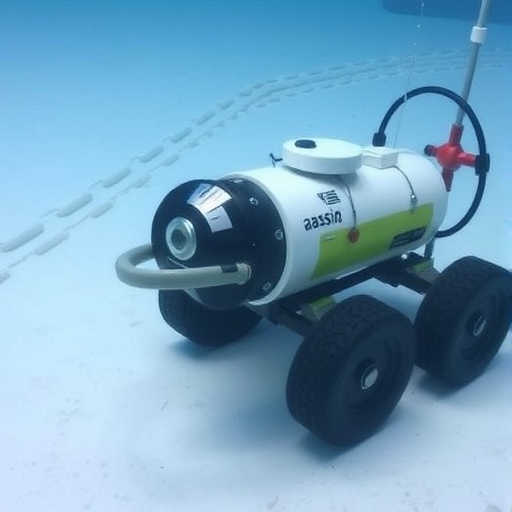In the icy depths of Antarctica’s Western Weddell Sea, beneath waters once locked under a colossal ice shelf, scientists have unveiled an extraordinary natural phenomenon: sprawling fish nesting grounds intricately maintained and organized into geometric patterns. These nests, discovered in a region recently exposed by the calving of one of the largest icebergs in recorded history, represent a stunning example of marine life’s capacity for complex social behavior even in the most extreme conditions on Earth.
The story of this remarkable discovery begins with the dramatic calving event of iceberg A68 in 2017. This iceberg, measuring an astounding 5,800 square kilometers, broke away from the Larsen C Ice Shelf, revealing a previously inaccessible section of seafloor. Deploying advanced submersible technology, including remotely operated vehicles (ROVs), researchers embarked on a mission to explore and document this newly unveiled underwater landscape. What they found exceeded expectations: more than a thousand carefully cleared circular nests, each conspicuously devoid of the dense carpet of plankton detritus blanketing the surrounding seabed.
These nests were far from randomly distributed. Instead, they formed distinct, enduring arrangements resembling neighborhoods, with some nests positioned singularly, others aligned in curves, and yet others clustering densely. The constant maintenance of these nests by the fish implies a level of spatial and social organization rarely observed in Antarctic marine ecosystems. This phenomenon not only reveals new insights into species behavior but also demands a reassessment of the ecological complexity thriving beneath Antarctic ice.
The architects of these nests are the yellowfin notie (Lindbergichthys nudifrons), a species of cryonotothenioid fish adapted to the freezing conditions of the Southern Ocean. Each nest represents a crucial reproductive investment, vigorously guarded by parent fish against a host of predators. Such steadfast nest maintenance ensures the protection and development of eggs, increasing the chances of survival in an environment characterized by extreme cold and seasonal darkness.
One of the most intriguing aspects of this discovery is how the spatial arrangement of nests illustrates the ‘selfish herd’ theory in practice. Nests clustered in dense groups provide mutual protection; individuals in the center of such clusters benefit from reduced predation risks due to their neighbors’ presence. Conversely, solitary nests found on the outskirts of these groupings are thought to be the domains of larger, more dominant fish capable of independently defending their offspring. This dynamic structure highlights an evolutionary balance between cooperative behavior and individual survival strategies in harsh environments.
This discovery was made possible during the Weddell Sea Expedition 2019, an ambitious scientific operation with dual objectives: to conduct interdisciplinary research in the waters formerly concealed beneath Larsen C, and to locate and document the wreck of Sir Ernest Shackleton’s legendary ship, the Endurance. While the expedition faced relentless challenges—thick multi-year pack ice thwarted the search for the Endurance—the mission succeeded in capturing essential data on the region’s ecology, advancing both biological knowledge and technological capability in polar marine exploration.
Utilizing a suite of cutting-edge technologies—autonomous underwater vehicles (AUVs) alongside the ROVs—scientists meticulously mapped the seafloor, revealing the scale and precision of these fish nesting sites. This synergistic use of robotics in one of the planet’s most forbidding frontiers underscores the crucial role of innovation in unraveling nature’s hidden narratives, particularly as climate-induced environmental changes accelerate in polar regions.
The significance of these findings extends beyond pure scientific curiosity. The nests represent a unique Vulnerable Marine Ecosystem (VME), sensitive to disturbances yet critical to the biodiversity and ecological integrity of the Southern Ocean. Documenting the existence of such a habitat strengthens the case for formal conservation measures, including the establishment of Marine Protected Areas (MPAs), which are essential for safeguarding Antarctica’s fragile marine life and the broader Antarctic food web.
Moreover, this discovery complements prior studies, such as those led by researcher Purser and colleagues in 2022, which identified one of the largest known fish breeding colonies on the planet. Together, these findings contribute to a growing body of evidence that challenges the perception of Antarctic waters as biologically barren, instead portraying them as vibrant ecosystems exhibiting remarkable resilience and complexity.
The intricately maintained nests tell a story of persistence, adaptation, and the interplay between environmental extremes and biological ingenuity. They emphasize how life has evolved sophisticated behaviors to endure and thrive where survival seems barely possible—beneath shifting ice shelves, in frigid waters, far from human eyes.
The implications of this discovery resonate strongly in the context of global climate change. As ice shelves continue to retreat and sea temperatures fluctuate, understanding the reproductive strategies and social behaviors of species like the yellowfin notie is critical. Such knowledge may inform conservation strategies and enhance predictions about how Antarctic marine ecosystems will respond to ongoing environmental pressures.
Ultimately, these findings highlight the profound secrets hidden beneath the Antarctic ice, bringing into focus the delicate balance of life and environment in one of Earth’s last frontiers. This revelation of an ordered, cooperative community of fish nesting sites not only pushes the boundaries of marine biology but also inspires a deeper appreciation for the adaptability and resilience of life in the face of adversity.
In sum, the discovery of these cryonotothenioid nesting grounds underscores a pivotal moment in polar science. It combines technological innovation, visionary exploration, and keen ecological insight, reminding humanity both of nature’s wonders and responsibility to protect them. Continued exploration and study of such unique marine habitats are essential as we strive to understand and preserve the fragile ecosystems that maintain our planet’s biodiversity and climatic equilibrium.
Subject of Research: Animals
Article Title: A Finding of Maintained Cryonotothenioid Nesting Sites in the Western Weddell Sea
News Publication Date: 29-Oct-2025
Web References:
10.3389/fmars.2025.1648168
Image Credits: Weddell Sea Expedition 2019
Keywords: Antarctica, Weddell Sea, cryonotothenioid, yellowfin notie, fish nests, marine biodiversity, vulnerable marine ecosystem, Antarctic exploration, underwater robotics, climate change, marine protected area, ecological adaptation




